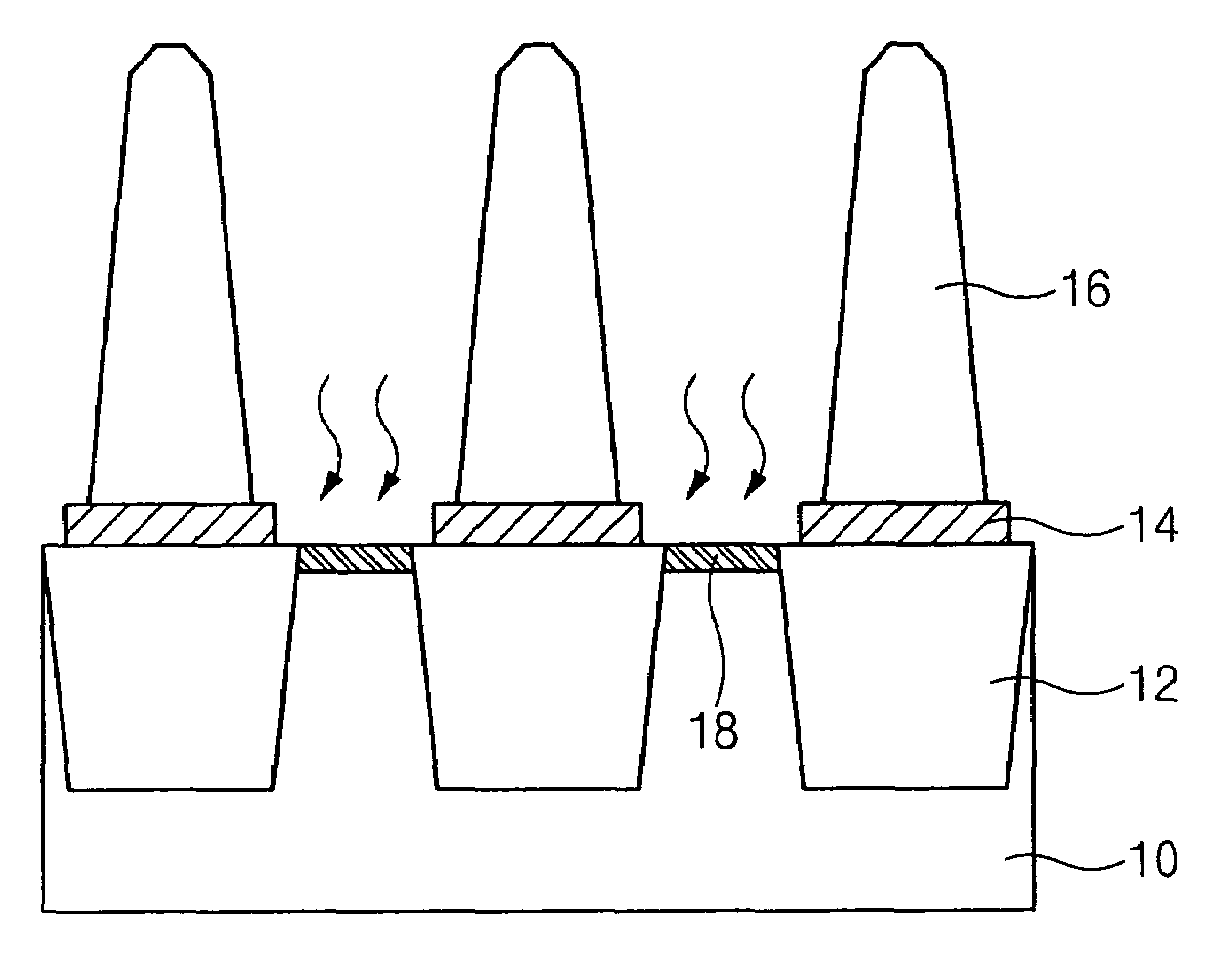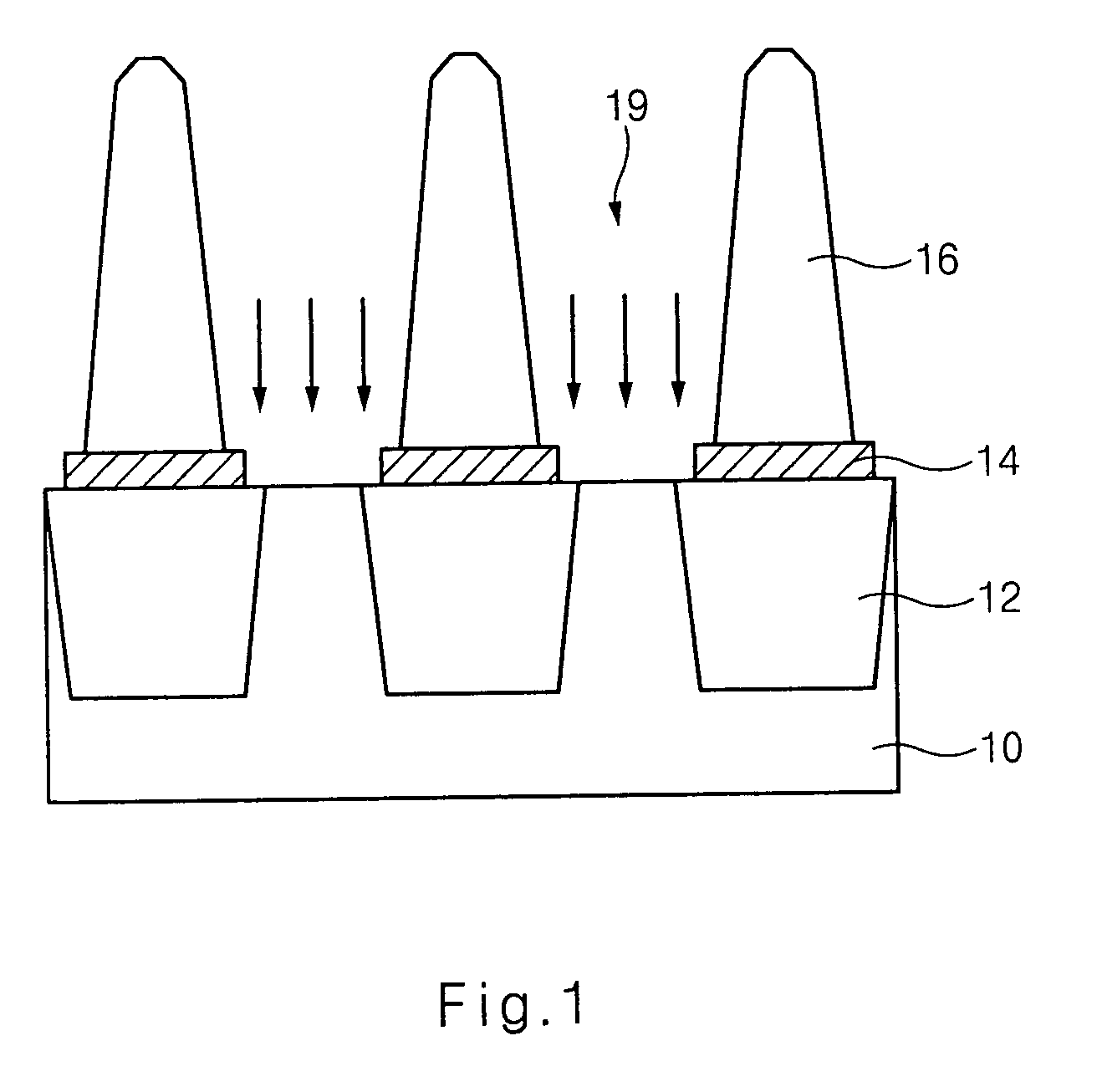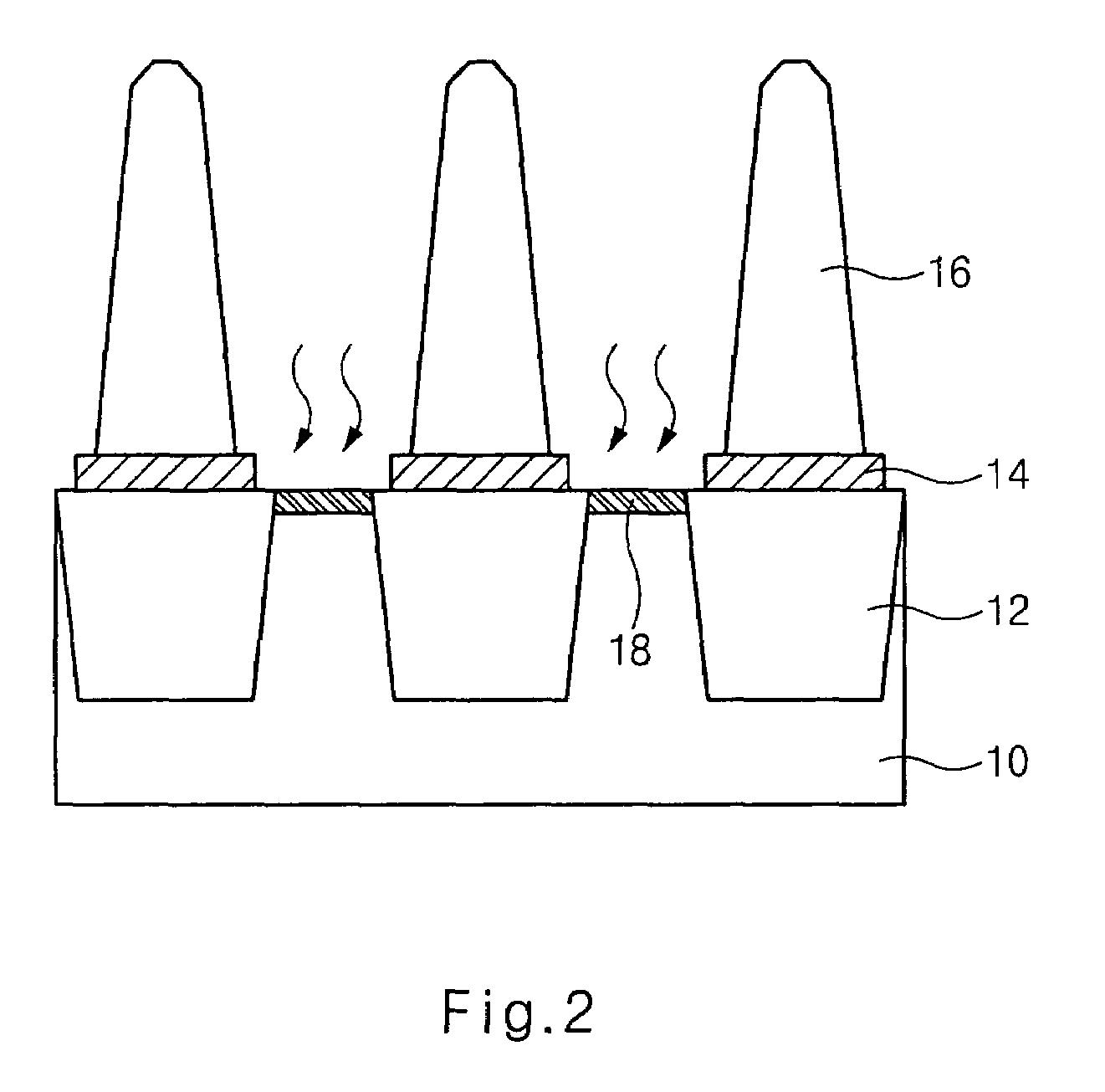Method for reducing contact resistance of a semiconductor device
a technology of contact resistance and semiconductor, which is applied in the direction of semiconductor devices, basic electric elements, electrical appliances, etc., can solve the problems of increasing contact resistance, unable to effectively reduce contact resistance, and extremely low contact resistance between silicons, so as to improve device operation capability, reduce contact resistance, and improve refresh characteristics
- Summary
- Abstract
- Description
- Claims
- Application Information
AI Technical Summary
Benefits of technology
Problems solved by technology
Method used
Image
Examples
Embodiment Construction
[0021]A method for fabricating a semiconductor device in accordance with a preferred embodiment of the present invention will now be described in detail with reference to the accompanying drawings.
[0022]FIGS. 1 through 3 are cross-sectional diagrams illustrating sequential steps of the method for fabricating the semiconductor device in accordance with the present invention.
[0023]Referring to FIG. 1, a device isolation film 12 defining an active region is formed on a semiconductor substrate 10. The device isolation film 12 is preferably of a trench-type.
[0024]A buffer layer (not shown) having a predetermined thickness is formed on the entire surface of the resulting structure. Preferably, the buffer layer consists of a nitride film, and serves as an etch barrier in a subsequent etching process for forming a contact hole to prevent damages of the active region.
[0025]An interlayer insulating film (not shown) is formed on the buffer layer. Preferably, the interlayer insulating film is a...
PUM
 Login to View More
Login to View More Abstract
Description
Claims
Application Information
 Login to View More
Login to View More - R&D
- Intellectual Property
- Life Sciences
- Materials
- Tech Scout
- Unparalleled Data Quality
- Higher Quality Content
- 60% Fewer Hallucinations
Browse by: Latest US Patents, China's latest patents, Technical Efficacy Thesaurus, Application Domain, Technology Topic, Popular Technical Reports.
© 2025 PatSnap. All rights reserved.Legal|Privacy policy|Modern Slavery Act Transparency Statement|Sitemap|About US| Contact US: help@patsnap.com



